Madonna del Sacco is the name of the following names:
- Madonna del Sacco (Andrea del Sarto), a 1525 fresco painting by Andrea del Sarto
- Madonna del Sacco (Perugino), a 1495–1500 oil-on-panel painting by Pietro Perugino
Madonna del Sacco is the name of the following names:
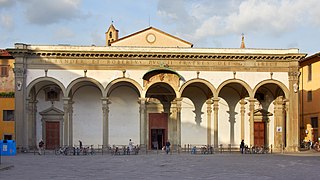
The Basilica della Santissima Annunziata is a Renaissance-style, Catholic minor basilica in Florence, region of Tuscany, Italy. This is considered the mother church of the Servite Order. It is located at the northeastern side of the Piazza Santissima Annunziata near the city center.
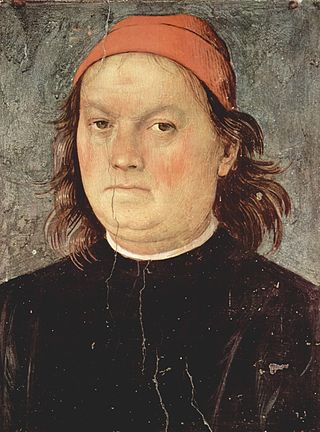
Pietro Perugino, born Pietro Vannucci, was an Italian Renaissance painter of the Umbrian school, who developed some of the qualities that found classic expression in the High Renaissance. Raphael was his most famous pupil.
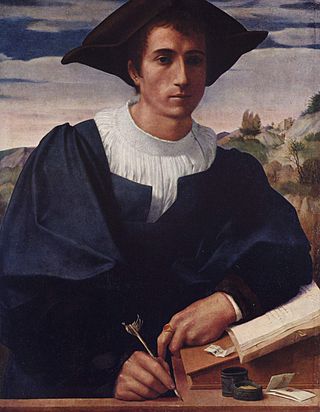
Franciabigio was an Italian painter of the Florentine Renaissance. His true name may have been Francesco di Cristofano; he is also referred to as either Marcantonio Franciabigio or Francia Bigio.
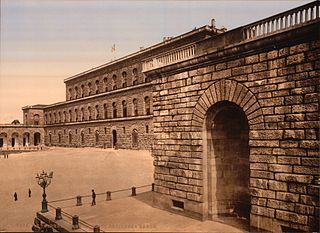
The Palazzo Pitti, in English sometimes called the Pitti Palace, is a vast, mainly Renaissance, palace in Florence, Italy. It is situated on the south side of the River Arno, a short distance from the Ponte Vecchio. The core of the present palazzo dates from 1458 and was originally the town residence of Luca Pitti, an ambitious Florentine banker.

Francesco d'Ubertino Verdi, called Bachiacca. He is also known as Francesco Ubertini, il Bacchiacca (1494–1557). He was an Italian painter of the Renaissance whose work is characteristic of the Florentine Mannerist style.
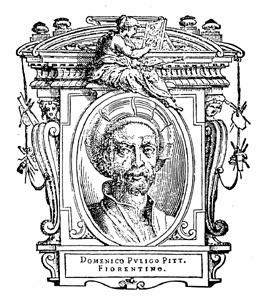
Domenico Puligo (1492–1527) was an Italian painter of the Renaissance, active in Florence. His real name was Domenico di Bartolomeo Ubaldini.

Florentine painting or the Florentine School refers to artists in, from, or influenced by the naturalistic style developed in Florence in the 14th century, largely through the efforts of Giotto di Bondone, and in the 15th century the leading school of Western painting. Some of the best known painters of the earlier Florentine School are Fra Angelico, Botticelli, Filippo Lippi, the Ghirlandaio family, Masolino, and Masaccio.
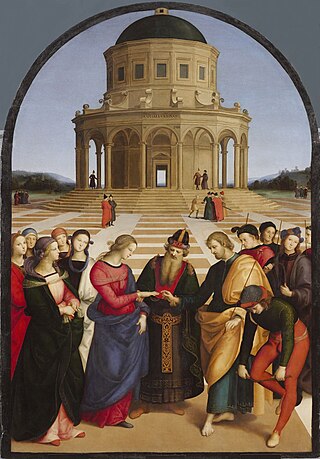
Italian Renaissance painting is the painting of the period beginning in the late 13th century and flourishing from the early 15th to late 16th centuries, occurring in the Italian Peninsula, which was at that time divided into many political states, some independent but others controlled by external powers. The painters of Renaissance Italy, although often attached to particular courts and with loyalties to particular towns, nonetheless wandered the length and breadth of Italy, often occupying a diplomatic status and disseminating artistic and philosophical ideas.

This article about the development of themes in Italian Renaissance painting is an extension to the article Italian Renaissance painting, for which it provides additional pictures with commentary. The works encompassed are from Giotto in the early 14th century to Michelangelo's Last Judgement of the 1530s.

Pietro Bettelini was a Swiss engraver.

Andrea del Sarto was an Italian painter from Florence, whose career flourished during the High Renaissance and early Mannerism. He was known as an outstanding fresco decorator, painter of altar-pieces, portraitist, draughtsman, and colorist. Although highly regarded during his lifetime as an artist senza errori, his renown was eclipsed after his death by that of his contemporaries Leonardo da Vinci, Michelangelo, and Raphael.

The Lamentation over the Dead Christ is a painting of the common subject of the Lamentation of Christ by the Italian Renaissance painter Pietro Perugino, executed in 1495 and now in the Galleria Palatina of Palazzo Pitti, Florence, Italy.
Advancing Women Artists Foundation (AWA) was an American not-for-profit organization, with headquarters in Indianapolis, Indiana, and Florence, Italy. AWA is committed to identifying and restoring artwork by Florence's female artists in the city’s museums, churches, and storehouses. The foundation achieves its mission through sponsoring restoration of artwork, and promoting research on female artists. As of 2018, AWA has restored 61 paintings and sculptures from the 15th century to the 19th century. It supports the creation of educational materials and events, including books, television documentaries, seminars, and conferences.

Irene Parenti Duclos (1754–1795) was an Italian painter and poet. Her work as an expert copyist of old master paintings was highly valued in her era, and brought her honors from several Italian art academies. Moreover, she achieved particular renown as a pioneer in the revival of encaustic painting.
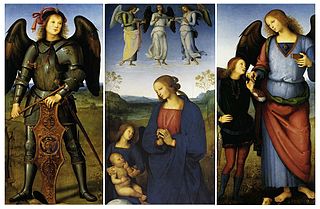
The Certosa di Pavia Altarpiece was an oil on panel altarpiece by Pietro Perugino. It dates to around 1496 to 1500 and three of its panels are now in the National Gallery, London. Art historians believe that the central panel is an autograph copy of the Madonna del Sacco.
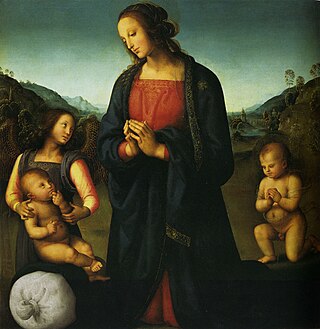
Madonna del Sacco is an oil on panel painting by Perugino, dating to around 1495–1500. It shows the Madonna and Child with the infant John the Baptist and an angel. It is now in the Galleria Palatina in Florence.

Nativity of the Virgin is a small painting in tempera on panel by Pietro Perugino, dating to around 1472. It is held in the Walker Art Gallery, in Liverpool. It shows the nativity of Mary. The style of the house is heavily influenced by Andrea del Verrocchio.

The Disputation on the Trinity is an oil-on-canvas painting by the Italian Renaissance artist Andrea del Sarto, created c. 1517, now in the Galleria Palatina in Florence.

The Madonna del Sacco is a fresco painting created in 1525 by the Italian Renaissance artist Andrea del Sarto in the Chiostro Grande adjacent to the Basilica of Santissima Annunziata in Florence.